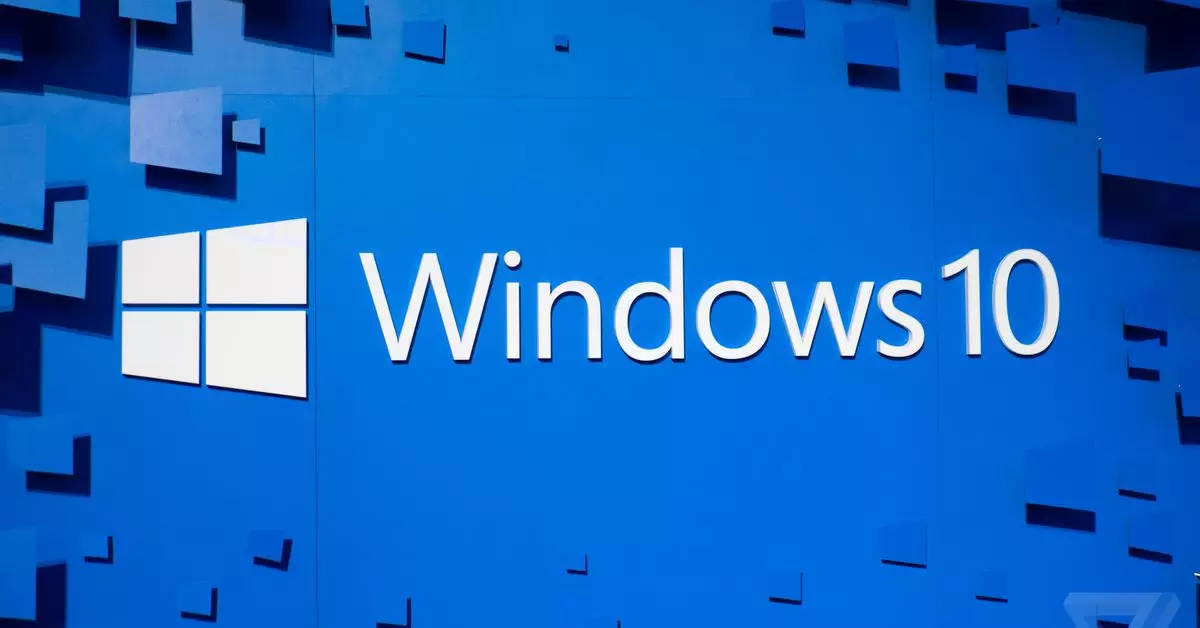As technology marches forward, it often leaves older systems in the dust, and Microsoft’s latest announcement concerning Windows 10 is no exception. The software giant has confirmed that starting in 2025, consumers can purchase an Extended Security Update (ESU) plan for $30, but many are already questioning the implications of this seemingly modest fee. While businesses face a steeper charge of $61 for the first year, the contrast in pricing illustrates a focus that prioritizes corporate needs over consumer support, making it essential to delve deeper into what this means for everyday users.
Windows 10, a revolutionary operating system that has been a staple for many users, is approaching its End of Support (EoS) date on October 14, 2025. What this end date signifies is more than just a calendar day; it represents a shift in how security vulnerabilities will be managed for this long-standing OS. Microsoft has ensured that, post-EoS, enrolled consumers in the ESU program will continue to receive critical and important security updates. However, the loss of new features, bug fixes, and technical support paints a stark picture of what remains for Windows 10 users: a lingering reliance on a system that is no longer being actively developed.
The most eye-catching aspect of the new pricing scheme for ESUs is the stark disparity between what consumers and businesses are expected to pay. While a $30 fee for an additional year of updates may seem reasonable, businesses are faced with a progressive cost structure that escalates with each subsequent year ($122 for the second and $244 for the third). This tiered system raises questions about the model’s equity and fairness, hinting that Microsoft is prioritizing business incomes while leaving consumers as an afterthought. The depth of the debate surrounding this pricing strategy should compel a closer examination of how typical users will adapt.
Given the impending end of support, Microsoft is strongly nudging consumers toward Windows 11, suggesting that users should make the transition while they still can. However, this recommendation opens the floor to criticism, particularly regarding the hardware requirements associated with Windows 11. Many existing devices—especially those released prior to 2018—are ineligible for an upgrade, potentially leaving a significant portion of the user base at a crossroads. Upgrading to Windows 11 doesn’t just require software changes; users may need to invest in new hardware, which further compounds the financial burden.
While the initial reception of Windows 11 may have been lackluster compared to its predecessor, recent months have shown signs of increased adoption. Still, challenges remain as Windows 10 operates with deep-rooted stability and familiarity among users. In August, Windows 11 even surpassed Windows 10 as the preferred operating system for gaming on platforms like Steam, albeit briefly. Nevertheless, it appears that the transition won’t be abrupt, and Windows 10 is likely to maintain a solid user base well into 2025 and possibly beyond.
In a series of perplexing moves earlier this year, Microsoft seemed to contradict its intention to cease major updates for Windows 10. By reopening its beta program to users, the company hinted at a path forward for those unwilling or unable to transition to the latest version. This decision could be seen as an acknowledgment of lingering consumer loyalty to Windows 10, despite its looming obsolescence.
We stand at a pivotal moment concerning Windows 10, where the decisions of Microsoft will shape the experience of countless users. The $30 Extended Security Update plan may seem attractive on the surface, but the potential need for new hardware to upgrade to Windows 11 complicates the narrative. As consumers weigh their options, one thing is clear: the transition from Windows 10 will require careful consideration and an understanding of what lies ahead in an ever-evolving tech landscape.

